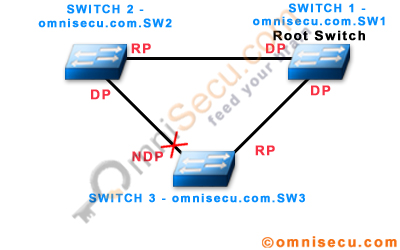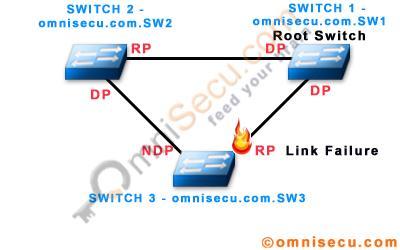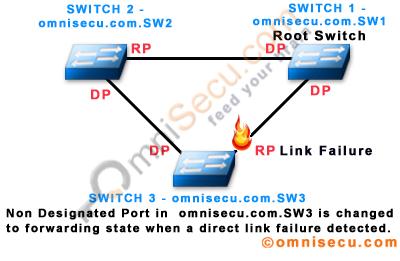What is Spanning Tree Protocol (STP) UplinkFast
UplinkFast, Backbone Fast and Portfast are Cisco’s proprietary extensions to the Classic Spanning Tree Protocol (STP 802.1 D) algorithm. The purpose UplinkFast, Backbone Fast and Portfast are to reduce the time it takes for classic Spanning Tree Protocol (STP) to converge after a link failure.
UplinkFast extension is useful for Direct Link failures (a link connected directlly to the same Switch). The UplinkFast extension can dramatically decrease the convergence time of the Spanning Tree Protocol (STP) in the event of the Direct link (a link connected directlly to the same Switch) failure of an uplink on an Access Layer switch.
The UplinkFast feature is designed to run in switches that has at least one alternate/backup port which is in the blocking state. For this reason Cisco recommends that UplinkFast be enabled only for switches with redundant blocked ports, typically at the access-layer. Access Layer switches have normally redundant uplinks to the Core and Distribution layers.
In Classic Spanning Tree Protocol (STP), if the available path to the Root Switch (Root Bridge) goes down, there will be a 50-second delay due to the Spanning Tree Protocol (STP) MaxAge timer and ForwardDelay timer before the currently blocked path will be available.
When a switch loses connectivity, alternate paths are used for communication. By enabling UplinkFast we can speed-up the selection of a new Root Port when a link or switch fails or when the Spanning Tree Protocol (STP) reconfiguration happens.
When UplinkFast is enabled, Root Port transitions to the Forwarding State immediately without going through the Listening State and Learning State, as in normal Spanning Tree Protocol (STP) Operation.
UplinkFast provides the immediate shift to alternate port by determining the possible paths going to the Root Switch (Root Bridge). The collection of possible paths going to the Root Switch (Root Bridge) are called uplink group. In aswitch, the uplink group consists in the Root Port and all the ports that provide an alternate connection to the Root Switch (Root Bridge). If the Root Port fails, an aternate port with next lowest cost from the uplink group is selected to immediately replace the Root Port.
Switch omnisecu.com.SW3 has two links connected to reach the Root Switch (Root Bridge) for redundancy. In this case, the port connected to Root Bridge (omnisecu.com.SW1) is the Root Port and the port connecting to Switch omnisecu.com.SW2 is Non Designated Port, which is Blocking State.

When the Switch omnisecu.com.SW3 detect that the Root Port (current forwarding port) has gone down, another port in the uplink group will be transitioned from blocking state to forwarding state immediately. The current Non Designated Port (which is in blocking state), will be transitioned to forwarding state immediately.

The Non Designated Port in omnisecu.com.SW3, which was in Blocking state before has transitioned to forward state immediatly, to reduce the convergence time in Spanning Tree Protocol (STP).

The problem which the Switches face now is that the backup link is brought up so quickly from blocking state to forwarding state, but the CAM tables (MAC Address Tables) are not updated and no longer accurate.
In order to solve the CAM tables (MAC Address Tables) related problem, switch omnisecu.com.SW3 begins to flood dummy packets with the different MAC addresses that it has in its CAM table as a source as multicast. This multicast flooding is done to update the CAM tables (MAC Address Tables) on the other switches.
When a switch is configured for UplinkFast, its Bridge Priority is changed to become 49,152 (default is 32768) and all of its port costs are increased by 3000. The reason for the priority being raised is to prevent the switch from becoming the Root Switch (Root Bridge).